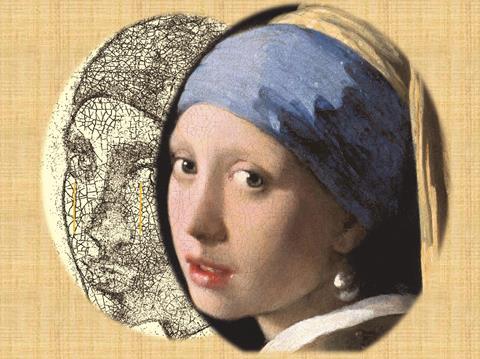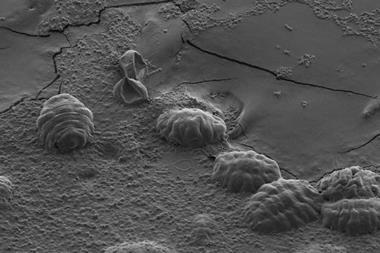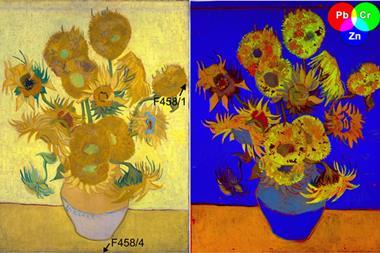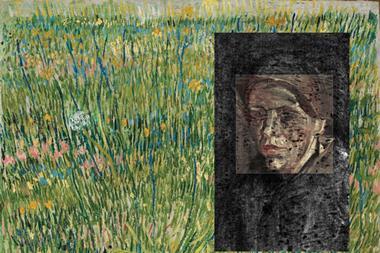New model could benefit art conservators and geologists
Understanding how cracking patterns develop in desiccated surfaces like old oil paintings or dried mud is surprisingly difficult. Now a Chilean scientist has established the first mathematical model of cracked surfaces that could help conservators preserve old paintings or give geologists information about the thickness of cracked clay or salt layers, and the stress they’ve been subjected to.
In oil paintings, the varnish becomes less flexible with age and when the canvas shrinks and expands in response to humidity and temperature changes, the paint starts to crack. As the cracks are hard to forge, art experts often use them, among other factors, to determine a painting’s authenticity. ‘Crack networks are like fingerprints,’ says JC Flores from the University of Tarapacá, who has developed a series of equations that give a theoretical insight into cracking patterns.
The thinner, larger and more rigid a layer is, the more likely it is to form cracks under stress. ‘The topology and size of the network depends on the particular material’s characteristics and external stress. In paintings, the stress mainly originates from irreversible desiccation [of the paint],’ explains Flores.

Armed with the model, Flores went on to analyse the cracks in 17th century painter Johannes Vermeer’s famous Girl with a pearl earring. Investigating the cracking pattern, Flores found that ‘the girl’s face has larger crack polygons on the right than on the left. The size of the polygons in the crack network is related to the thickness of colour layers,’ he explains. This means that Vermeer must have obtained the effect that sees the girl’s face seems to be illuminated from the right side by adding more paint to girl’s right cheek, Flores concluded.
‘[The study] is a really interesting way of looking at crack patterns, but it doesn’t take into account how complex the three dimensional structure of a painting is,’ says Abbie Vandivere, paintings conservator at the Mauritshuis in The Hague, the Netherlands, which houses Vermeer’s magnum opus. ‘But in the case of the Girl with a pearl earring, the crack patterns give us a good idea about its restoration history,’ she explains. The cracks on the right side of the girl’s face contain a black material – residues of a previous treatment aimed at smoothing out the varnish. ‘It is unclear if that made the cracking worse, but it certainly made it more noticeable,’ Vandivere adds.
‘I find the study interesting, but the work is purely theoretical and there are no real experimental tests,’ says Renaud Delannay, who researches physical mechanisms of dry flows like avalanches at the University of Rennes in France. Flores’ equations can currently only predict thickness ratios, as they did with Vermeer’s painting, ‘but there aren’t any measurements of the thickness or any tests of the model’, Delannay explains.
Flores is now refining his model so that it can predict the shape and size of the crack polygons.
References
This article is free to access until 10 March 2017
J C Flores, Soft Matter, 2017, DOI: 10.1039/c6sm02849g












No comments yet